Xueliang Zhang
FarSLIP: Discovering Effective CLIP Adaptation for Fine-Grained Remote Sensing Understanding
Nov 18, 2025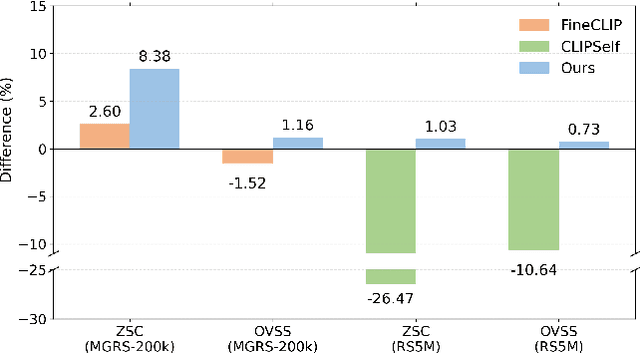
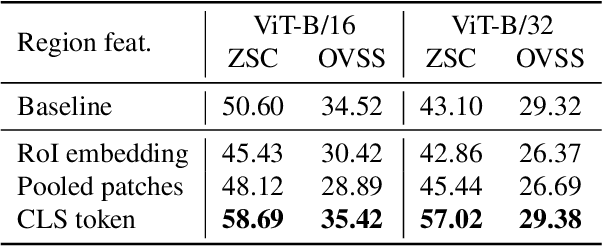
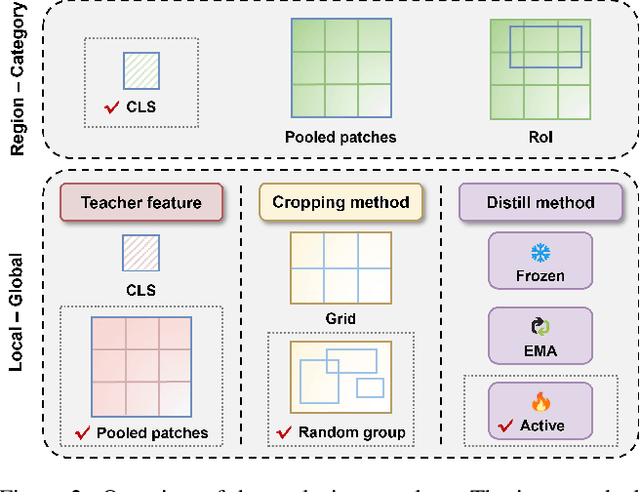

Abstract:As CLIP's global alignment limits its ability to capture fine-grained details, recent efforts have focused on enhancing its region-text alignment. However, current remote sensing (RS)-specific CLIP variants still inherit this limited spatial awareness. We identify two key limitations behind this: (1) current RS image-text datasets generate global captions from object-level labels, leaving the original object-level supervision underutilized; (2) despite the success of region-text alignment methods in general domain, their direct application to RS data often leads to performance degradation. To address these, we construct the first multi-granularity RS image-text dataset, MGRS-200k, featuring rich object-level textual supervision for RS region-category alignment. We further investigate existing fine-grained CLIP tuning strategies and find that current explicit region-text alignment methods, whether in a direct or indirect way, underperform due to severe degradation of CLIP's semantic coherence. Building on these, we propose FarSLIP, a Fine-grained Aligned RS Language-Image Pretraining framework. Rather than the commonly used patch-to-CLS self-distillation, FarSLIP employs patch-to-patch distillation to align local and global visual cues, which improves feature discriminability while preserving semantic coherence. Additionally, to effectively utilize region-text supervision, it employs simple CLS token-based region-category alignment rather than explicit patch-level alignment, further enhancing spatial awareness. FarSLIP features improved fine-grained vision-language alignment in RS domain and sets a new state of the art not only on RS open-vocabulary semantic segmentation, but also on image-level tasks such as zero-shot classification and image-text retrieval. Our dataset, code, and models are available at https://github.com/NJU-LHRS/FarSLIP.
ARiSE: Auto-Regressive Multi-Channel Speech Enhancement
May 28, 2025Abstract:We propose ARiSE, an auto-regressive algorithm for multi-channel speech enhancement. ARiSE improves existing deep neural network (DNN) based frame-online multi-channel speech enhancement models by introducing auto-regressive connections, where the estimated target speech at previous frames is leveraged as extra input features to help the DNN estimate the target speech at the current frame. The extra input features can be derived from (a) the estimated target speech in previous frames; and (b) a beamformed mixture with the beamformer computed based on the previous estimated target speech. On the other hand, naively training the DNN in an auto-regressive manner is very slow. To deal with this, we propose a parallel training mechanism to speed up the training. Evaluation results in noisy-reverberant conditions show the effectiveness and potential of the proposed algorithms.
Two-stage Audio-Visual Target Speaker Extraction System for Real-Time Processing On Edge Device
May 28, 2025Abstract:Audio-Visual Target Speaker Extraction (AVTSE) aims to isolate a target speaker's voice in a multi-speaker environment with visual cues as auxiliary. Most of the existing AVTSE methods encode visual and audio features simultaneously, resulting in extremely high computational complexity and making it impractical for real-time processing on edge devices. To tackle this issue, we proposed a two-stage ultra-compact AVTSE system. Specifically, in the first stage, a compact network is employed for voice activity detection (VAD) using visual information. In the second stage, the VAD results are combined with audio inputs to isolate the target speaker's voice. Experiments show that the proposed system effectively suppresses background noise and interfering voices while spending little computational resources.
Room Impulse Response as a Prompt for Acoustic Echo Cancellation
May 26, 2025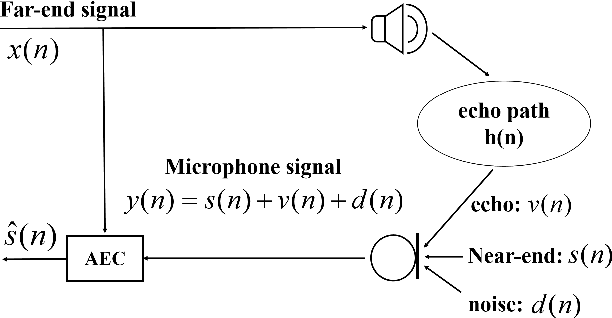

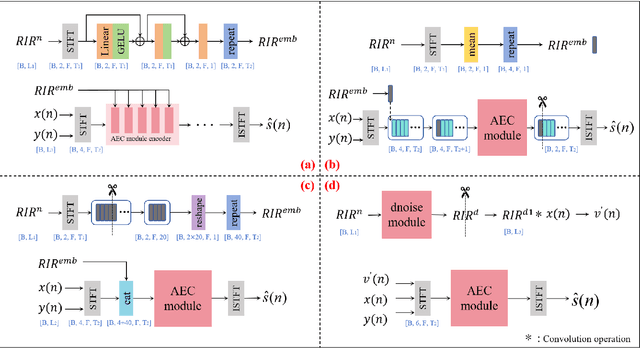
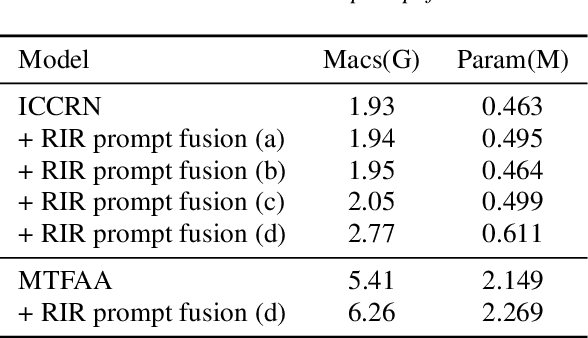
Abstract:Data-driven acoustic echo cancellation (AEC) methods, predominantly trained on synthetic or constrained real-world datasets, encounter performance declines in unseen echo scenarios, especially in real environments where echo paths are not directly observable. Our proposed method counters this limitation by integrating room impulse response (RIR) as a pivotal training prompt, aiming to improve the generalization of AEC models in such unforeseen conditions. We also explore four RIR prompt fusion methods. Comprehensive evaluations, including both simulated RIR under unknown conditions and recorded RIR in real, demonstrate that the proposed approach significantly improves performance compared to baseline models. These results substantiate the effectiveness of our RIR-guided approach in strengthening the model's generalization capabilities.
Multi-Channel Acoustic Echo Cancellation Based on Direction-of-Arrival Estimation
May 26, 2025Abstract:Acoustic echo cancellation (AEC) is an important speech signal processing technology that can remove echoes from microphone signals to enable natural-sounding full-duplex speech communication. While single-channel AEC is widely adopted, multi-channel AEC can leverage spatial cues afforded by multiple microphones to achieve better performance. Existing multi-channel AEC approaches typically combine beamforming with deep neural networks (DNN). This work proposes a two-stage algorithm that enhances multi-channel AEC by incorporating sound source directional cues. Specifically, a lightweight DNN is first trained to predict the sound source directions, and then the predicted directional information, multi-channel microphone signals, and single-channel far-end signal are jointly fed into an AEC network to estimate the near-end signal. Evaluation results show that the proposed algorithm outperforms baseline approaches and exhibits robust generalization across diverse acoustic environments.
Temporal-Spectral-Spatial Unified Remote Sensing Dense Prediction
May 18, 2025Abstract:The proliferation of diverse remote sensing data has spurred advancements in dense prediction tasks, yet significant challenges remain in handling data heterogeneity. Remote sensing imagery exhibits substantial variability across temporal, spectral, and spatial (TSS) dimensions, complicating unified data processing. Current deep learning models for dense prediction tasks, such as semantic segmentation and change detection, are typically tailored to specific input-output configurations. Consequently, variations in data dimensionality or task requirements often lead to significant performance degradation or model incompatibility, necessitating costly retraining or fine-tuning efforts for different application scenarios. This paper introduces the Temporal-Spectral-Spatial Unified Network (TSSUN), a novel architecture designed for unified representation and modeling of remote sensing data across diverse TSS characteristics and task types. TSSUN employs a Temporal-Spectral-Spatial Unified Strategy that leverages meta-information to decouple and standardize input representations from varied temporal, spectral, and spatial configurations, and similarly unifies output structures for different dense prediction tasks and class numbers. Furthermore, a Local-Global Window Attention mechanism is proposed to efficiently capture both local contextual details and global dependencies, enhancing the model's adaptability and feature extraction capabilities. Extensive experiments on multiple datasets demonstrate that a single TSSUN model effectively adapts to heterogeneous inputs and unifies various dense prediction tasks. The proposed approach consistently achieves or surpasses state-of-the-art performance, highlighting its robustness and generalizability for complex remote sensing applications without requiring task-specific modifications.
Listen to Extract: Onset-Prompted Target Speaker Extraction
May 08, 2025



Abstract:We propose $\textit{listen to extract}$ (LExt), a highly-effective while extremely-simple algorithm for monaural target speaker extraction (TSE). Given an enrollment utterance of a target speaker, LExt aims at extracting the target speaker from the speaker's mixed speech with other speakers. For each mixture, LExt concatenates an enrollment utterance of the target speaker to the mixture signal at the waveform level, and trains deep neural networks (DNN) to extract the target speech based on the concatenated mixture signal. The rationale is that, this way, an artificial speech onset is created for the target speaker and it could prompt the DNN (a) which speaker is the target to extract; and (b) spectral-temporal patterns of the target speaker that could help extraction. This simple approach produces strong TSE performance on multiple public TSE datasets including WSJ0-2mix, WHAM! and WHAMR!.
Transforming Weather Data from Pixel to Latent Space
Mar 09, 2025Abstract:The increasing impact of climate change and extreme weather events has spurred growing interest in deep learning for weather research. However, existing studies often rely on weather data in pixel space, which presents several challenges such as smooth outputs in model outputs, limited applicability to a single pressure-variable subset (PVS), and high data storage and computational costs. To address these challenges, we propose a novel Weather Latent Autoencoder (WLA) that transforms weather data from pixel space to latent space, enabling efficient weather task modeling. By decoupling weather reconstruction from downstream tasks, WLA improves the accuracy and sharpness of weather task model results. The incorporated Pressure-Variable Unified Module transforms multiple PVS into a unified representation, enhancing the adaptability of the model in multiple weather scenarios. Furthermore, weather tasks can be performed in a low-storage latent space of WLA rather than a high-storage pixel space, thus significantly reducing data storage and computational costs. Through extensive experimentation, we demonstrate its superior compression and reconstruction performance, enabling the creation of the ERA5-latent dataset with unified representations of multiple PVS from ERA5 data. The compressed full PVS in the ERA5-latent dataset reduces the original 244.34 TB of data to 0.43 TB. The downstream task further demonstrates that task models can apply to multiple PVS with low data costs in latent space and achieve superior performance compared to models in pixel space. Code, ERA5-latent data, and pre-trained models are available at https://anonymous.4open.science/r/Weather-Latent-Autoencoder-8467.
Robust Target Speaker Direction of Arrival Estimation
Dec 25, 2024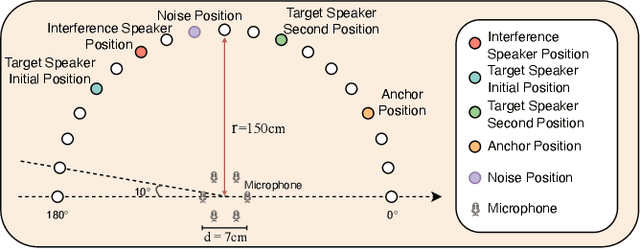
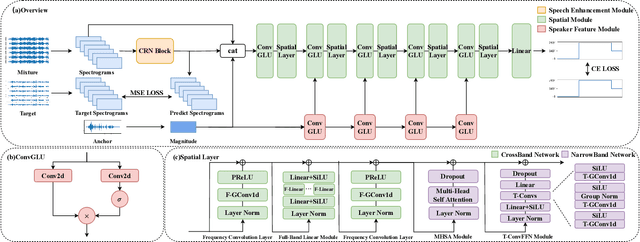

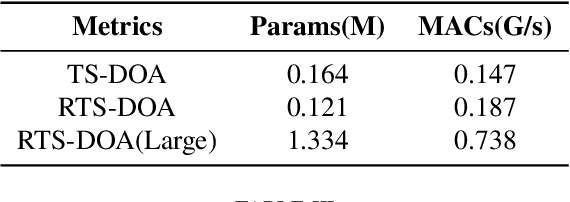
Abstract:In multi-speaker environments the direction of arrival (DOA) of a target speaker is key for improving speech clarity and extracting target speaker's voice. However, traditional DOA estimation methods often struggle in the presence of noise, reverberation, and particularly when competing speakers are present. To address these challenges, we propose RTS-DOA, a robust real-time DOA estimation system. This system innovatively uses the registered speech of the target speaker as a reference and leverages full-band and sub-band spectral information from a microphone array to estimate the DOA of the target speaker's voice. Specifically, the system comprises a speech enhancement module for initially improving speech quality, a spatial module for learning spatial information, and a speaker module for extracting voiceprint features. Experimental results on the LibriSpeech dataset demonstrate that our RTS-DOA system effectively tackles multi-speaker scenarios and established new optimal benchmarks.
LHRS-Bot-Nova: Improved Multimodal Large Language Model for Remote Sensing Vision-Language Interpretation
Nov 14, 2024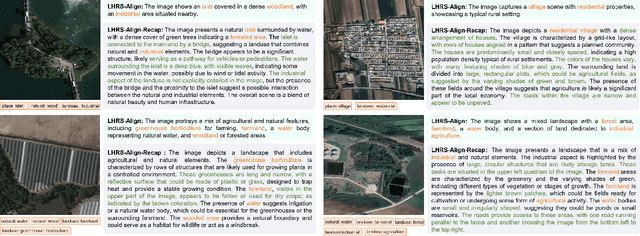

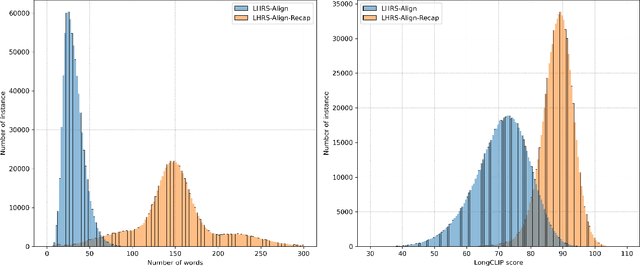

Abstract:Automatically and rapidly understanding Earth's surface is fundamental to our grasp of the living environment and informed decision-making. This underscores the need for a unified system with comprehensive capabilities in analyzing Earth's surface to address a wide range of human needs. The emergence of multimodal large language models (MLLMs) has great potential in boosting the efficiency and convenience of intelligent Earth observation. These models can engage in human-like conversations, serve as unified platforms for understanding images, follow diverse instructions, and provide insightful feedbacks. In this study, we introduce LHRS-Bot-Nova, an MLLM specialized in understanding remote sensing (RS) images, designed to expertly perform a wide range of RS understanding tasks aligned with human instructions. LHRS-Bot-Nova features an enhanced vision encoder and a novel bridge layer, enabling efficient visual compression and better language-vision alignment. To further enhance RS-oriented vision-language alignment, we propose a large-scale RS image-caption dataset, generated through feature-guided image recaptioning. Additionally, we introduce an instruction dataset specifically designed to improve spatial recognition abilities. Extensive experiments demonstrate superior performance of LHRS-Bot-Nova across various RS image understanding tasks. We also evaluate different MLLM performances in complex RS perception and instruction following using a complicated multi-choice question evaluation benchmark, providing a reliable guide for future model selection and improvement. Data, code, and models will be available at https://github.com/NJU-LHRS/LHRS-Bot.
 Add to Chrome
Add to Chrome Add to Firefox
Add to Firefox Add to Edge
Add to Edge